
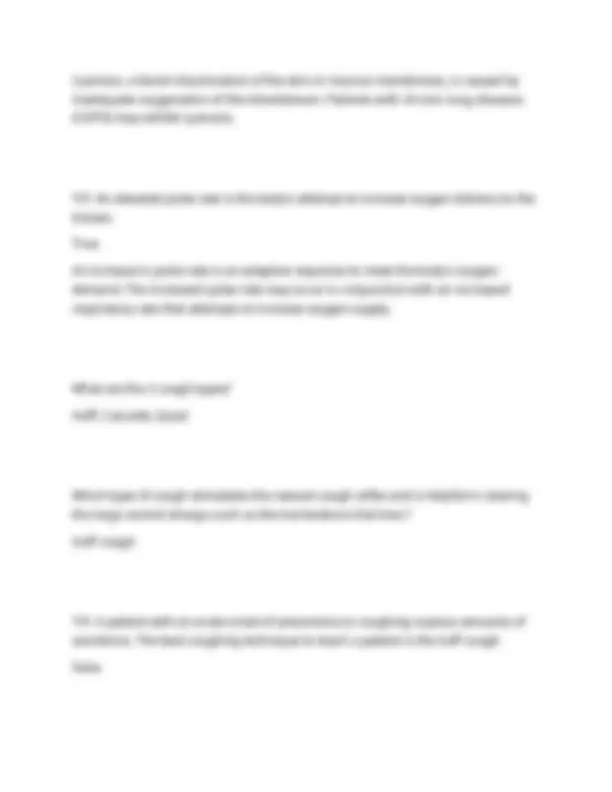
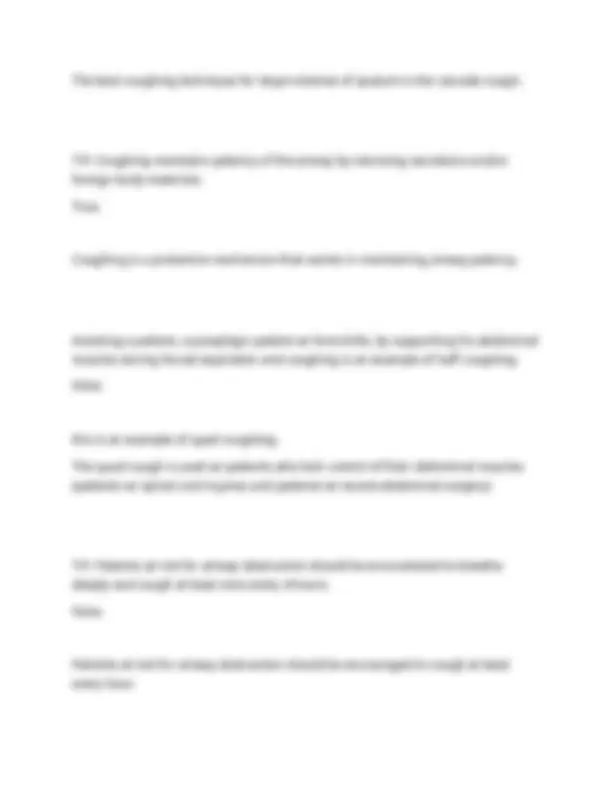
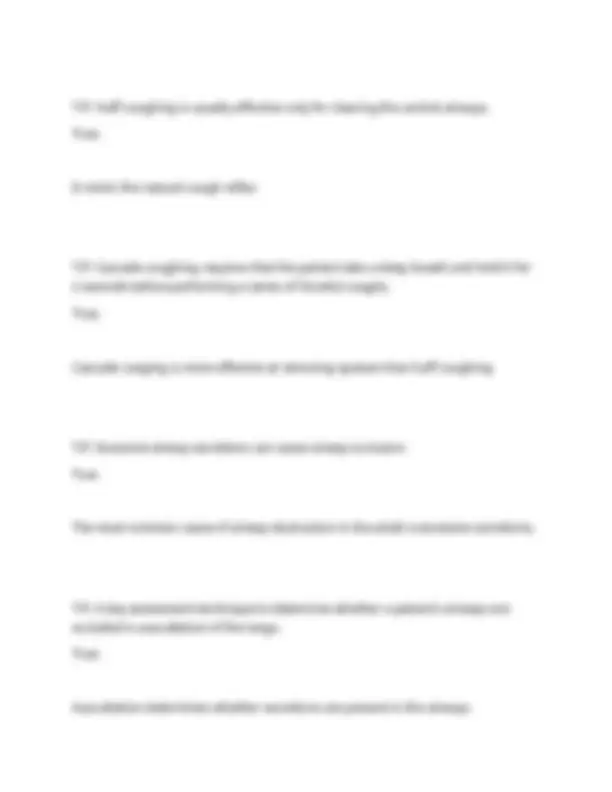
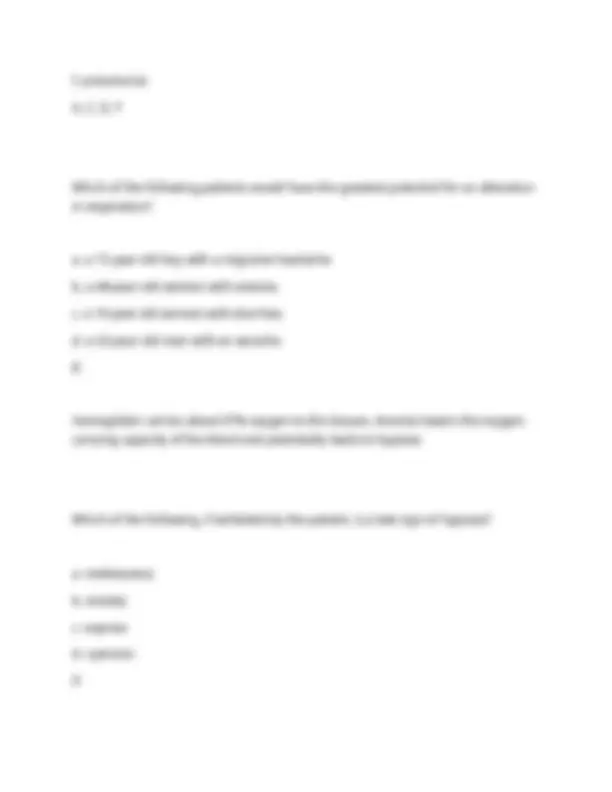
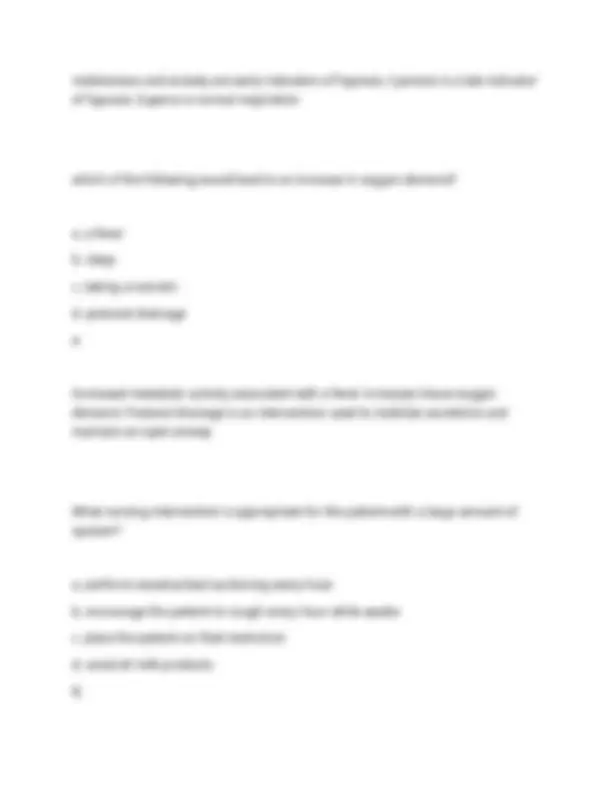
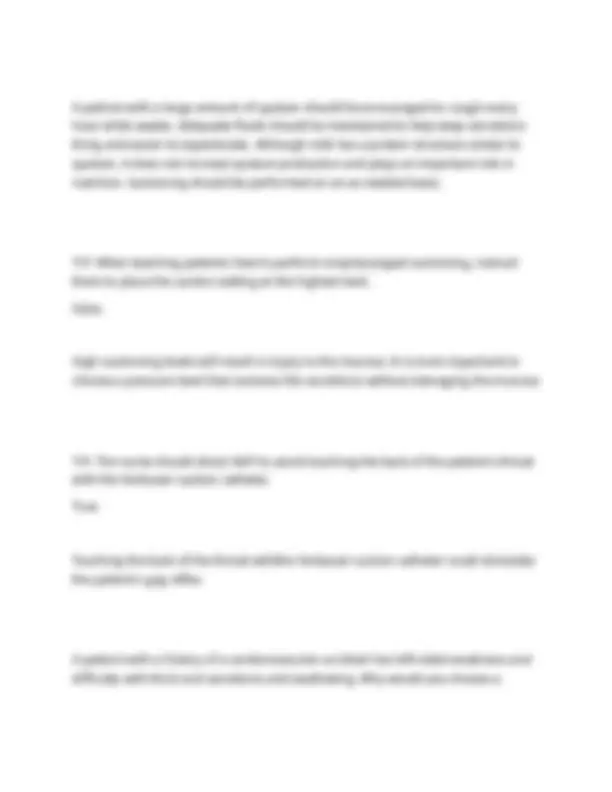
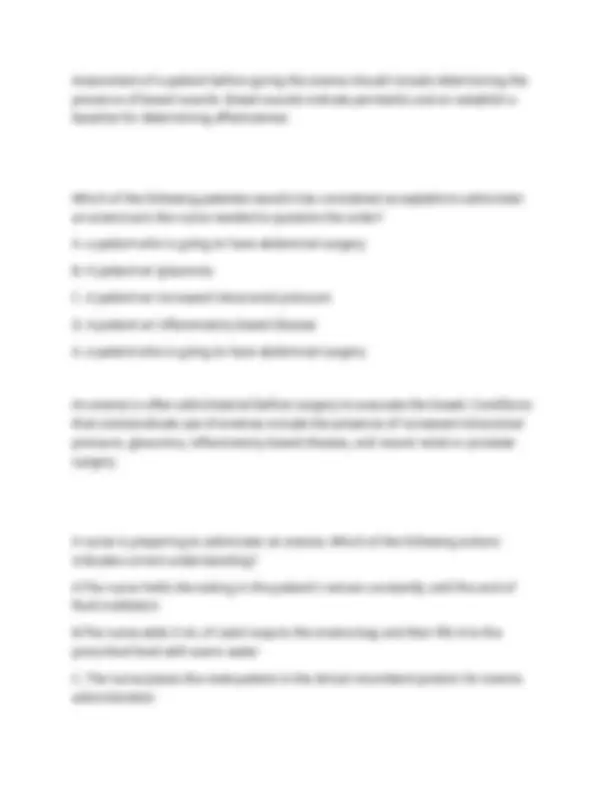
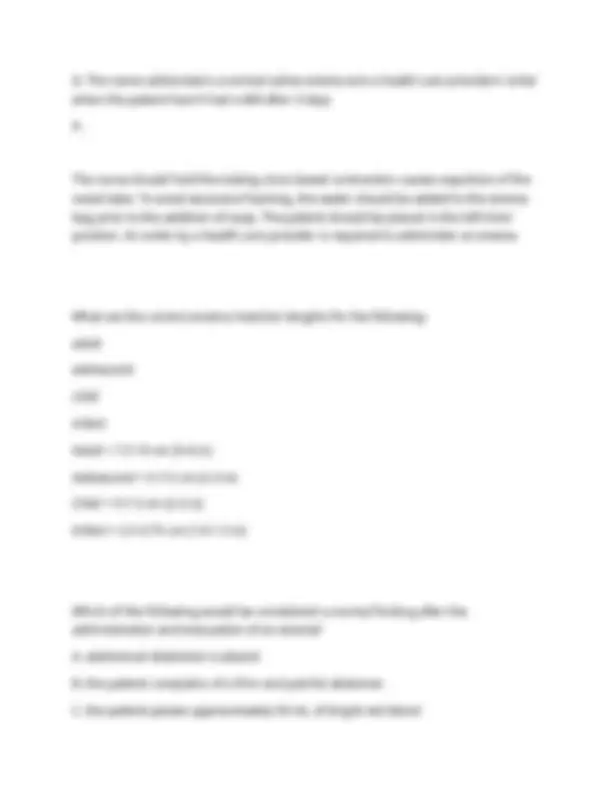
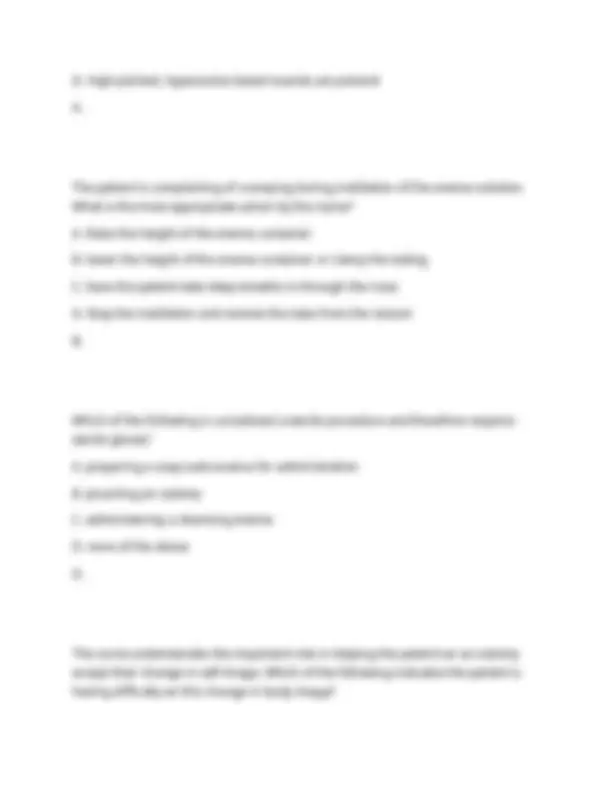
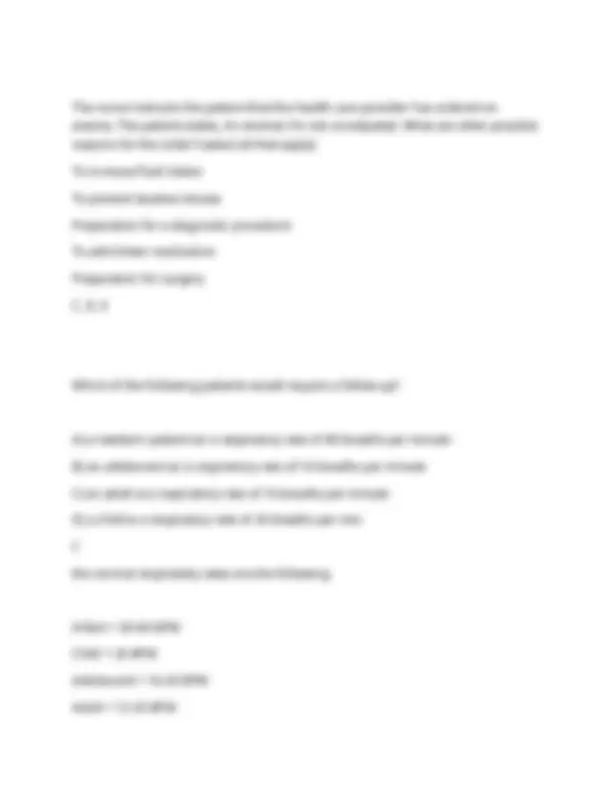
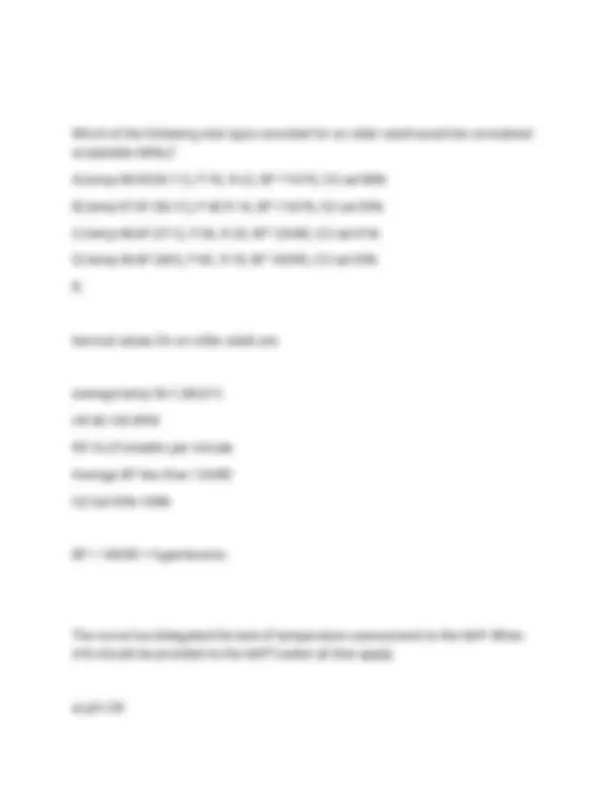
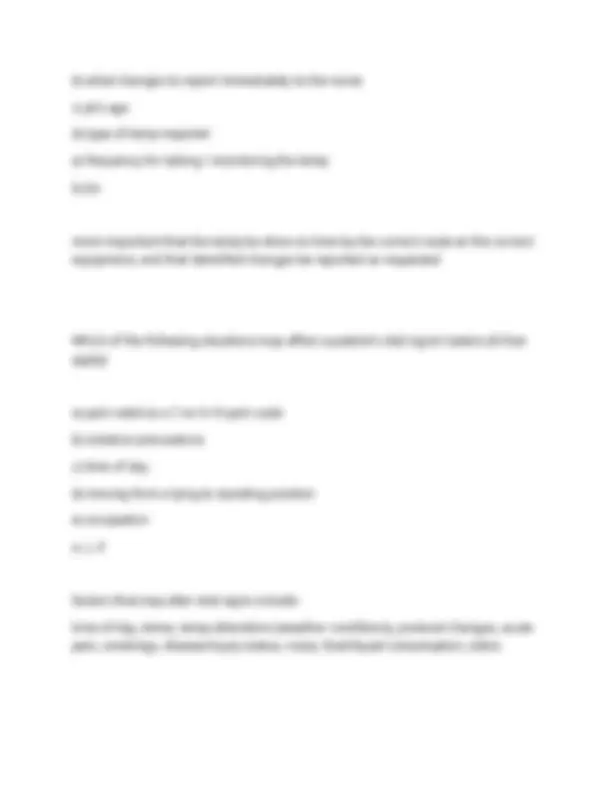
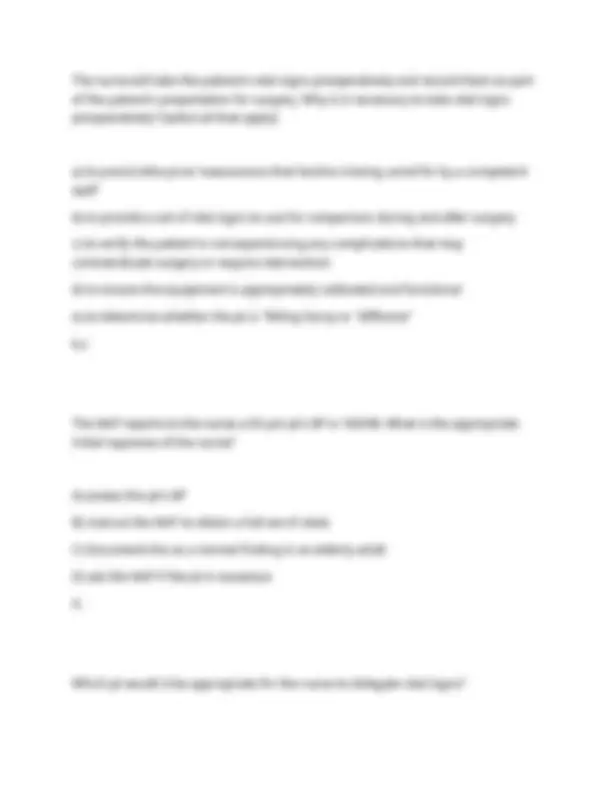
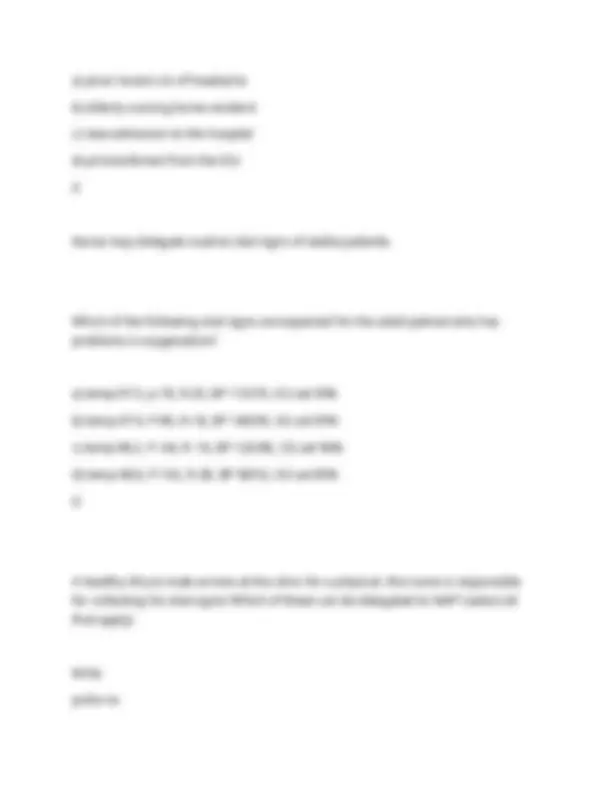
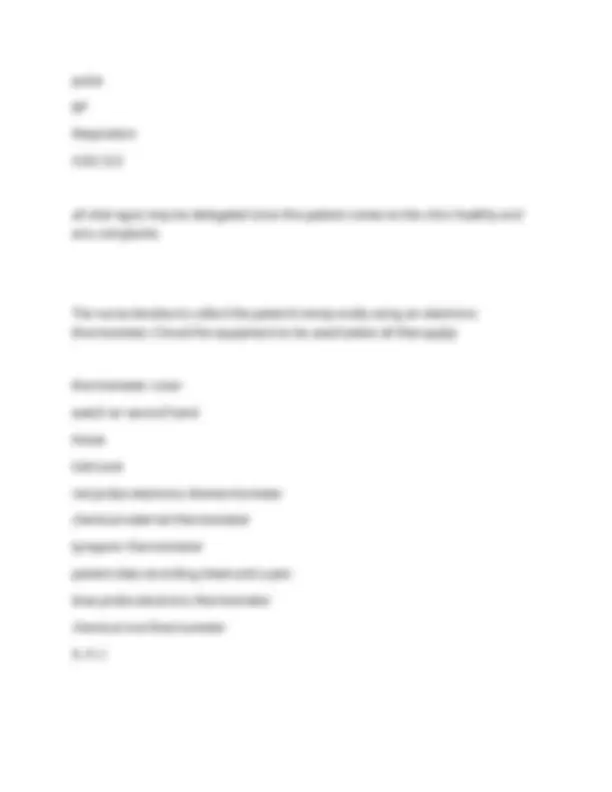
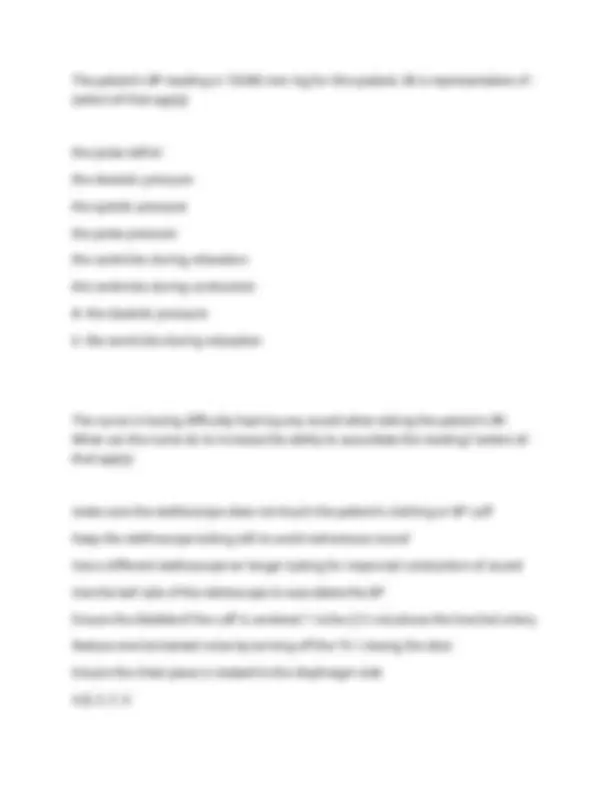
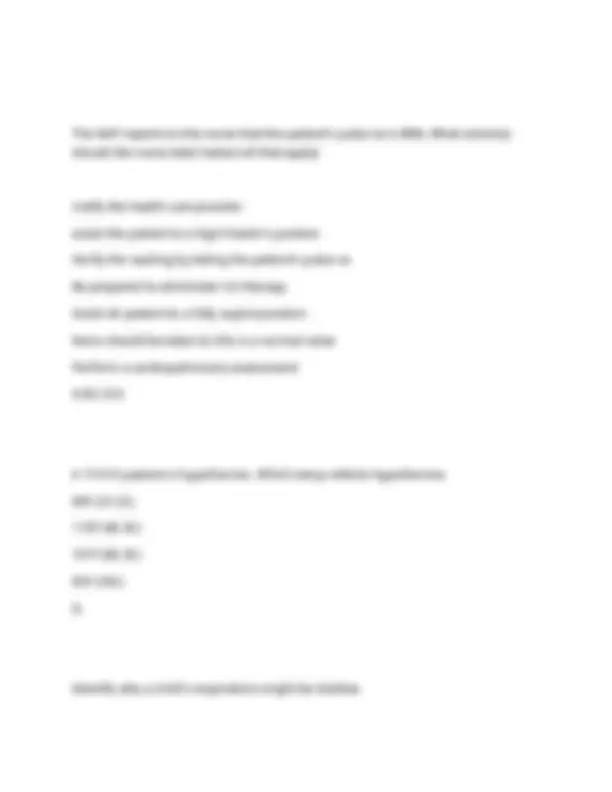
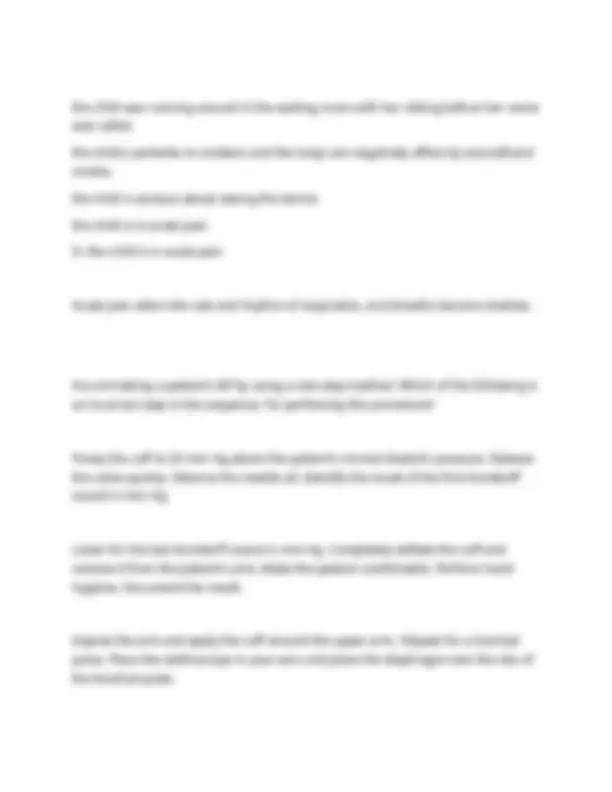
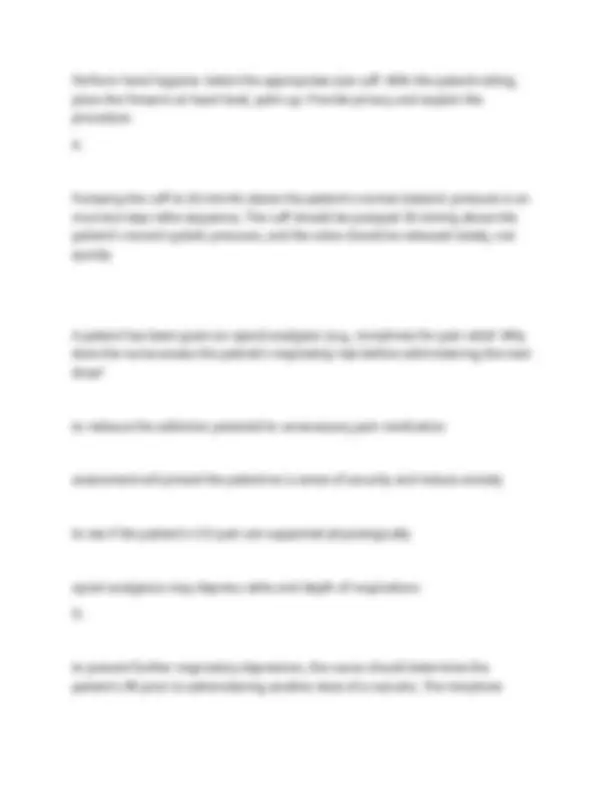
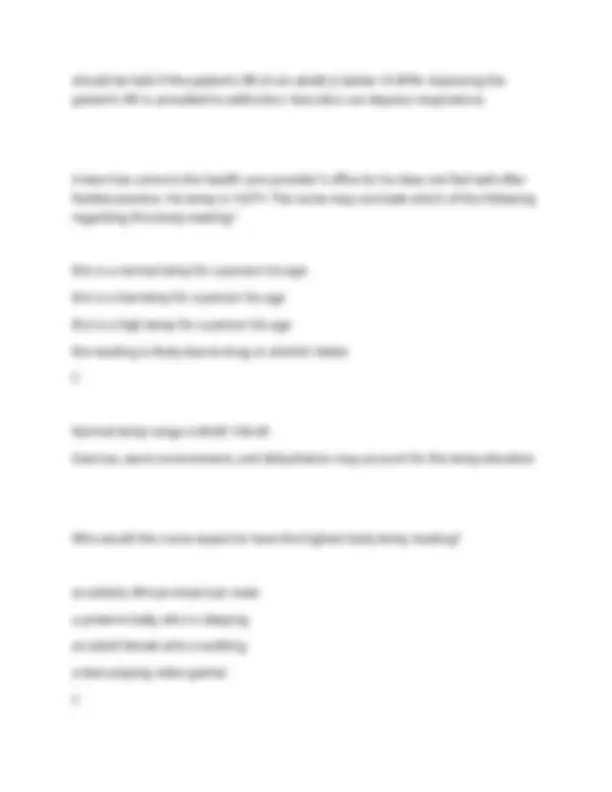
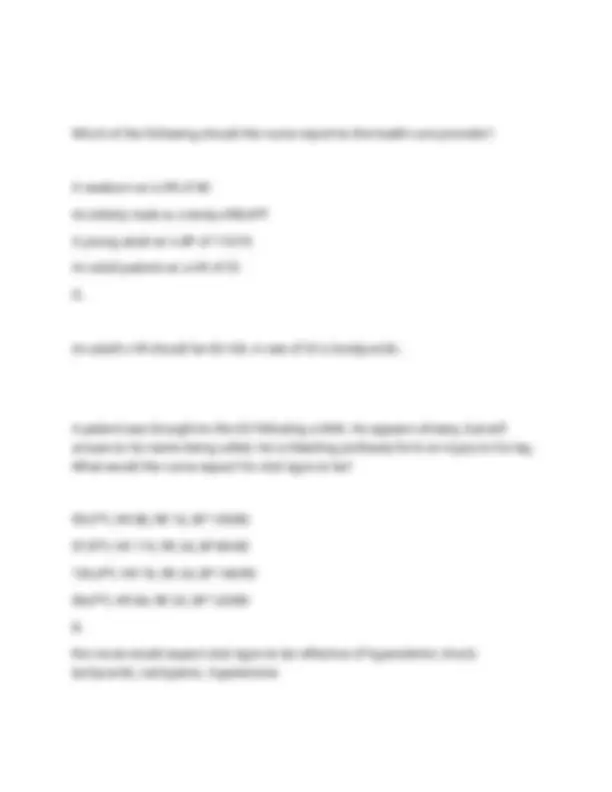
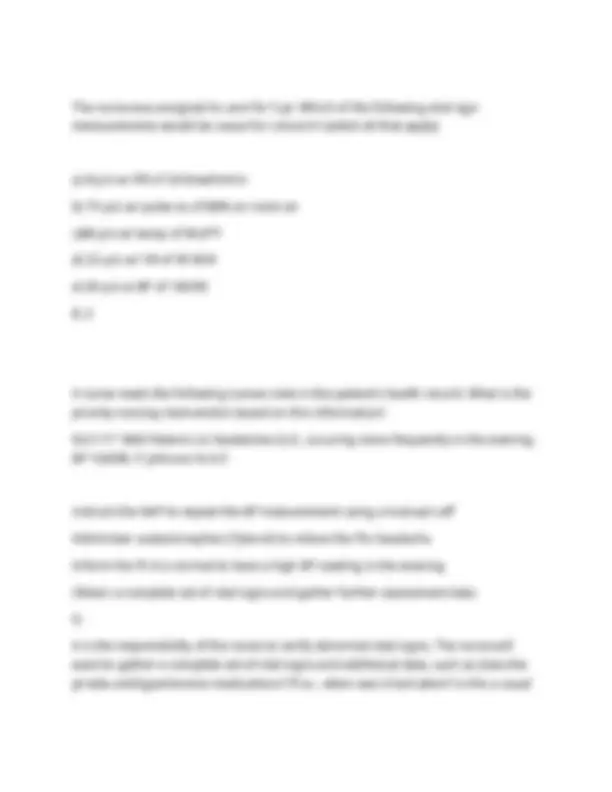
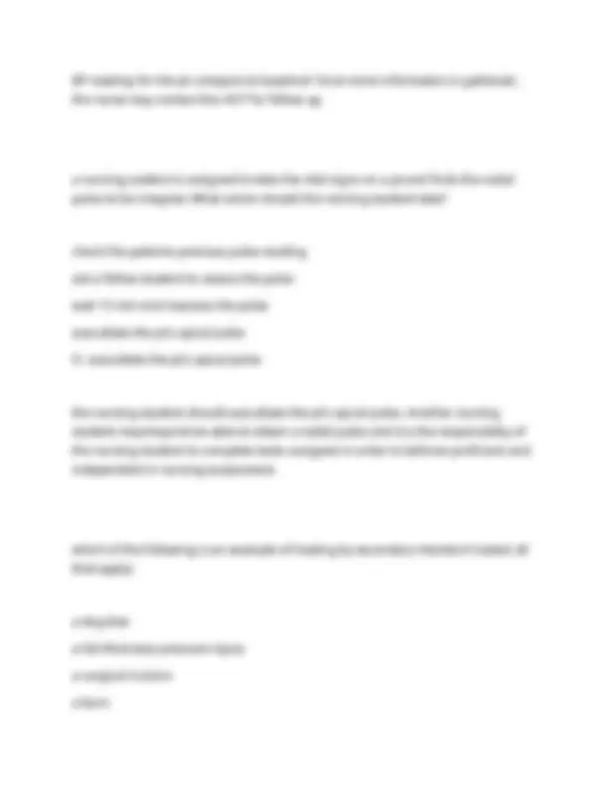
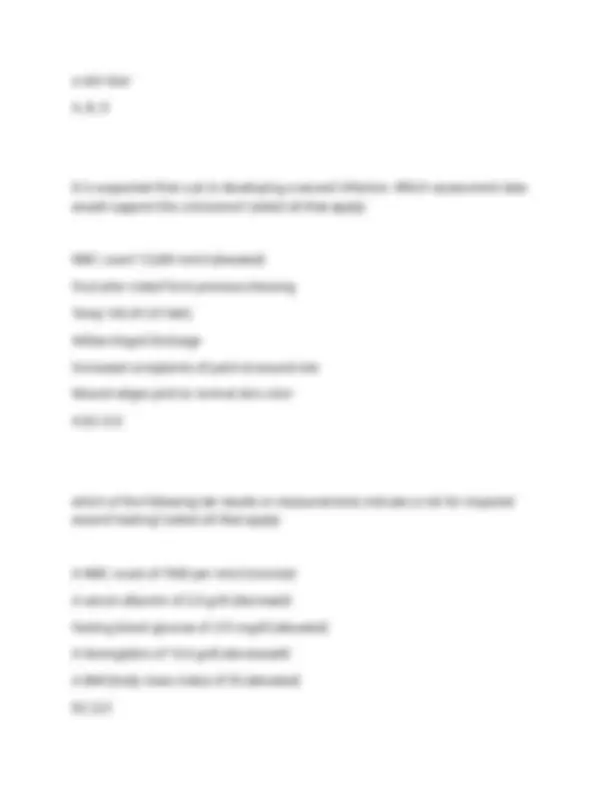
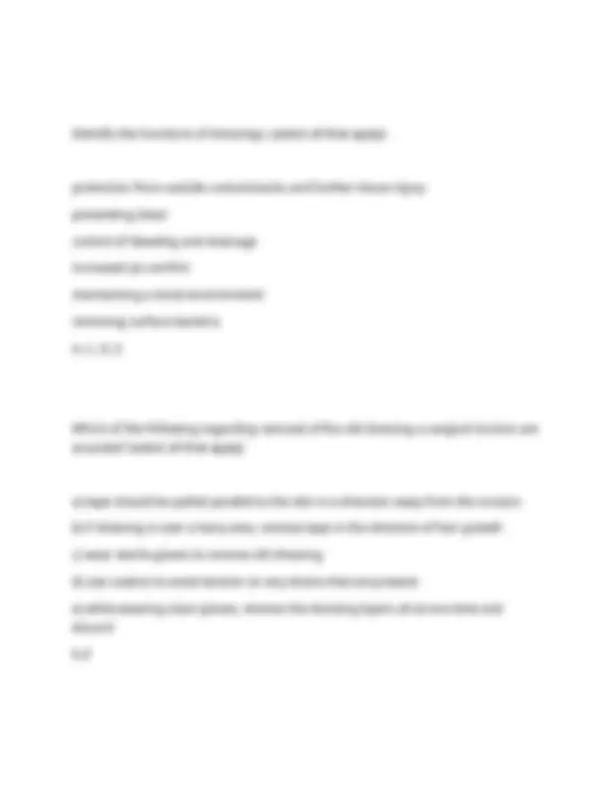
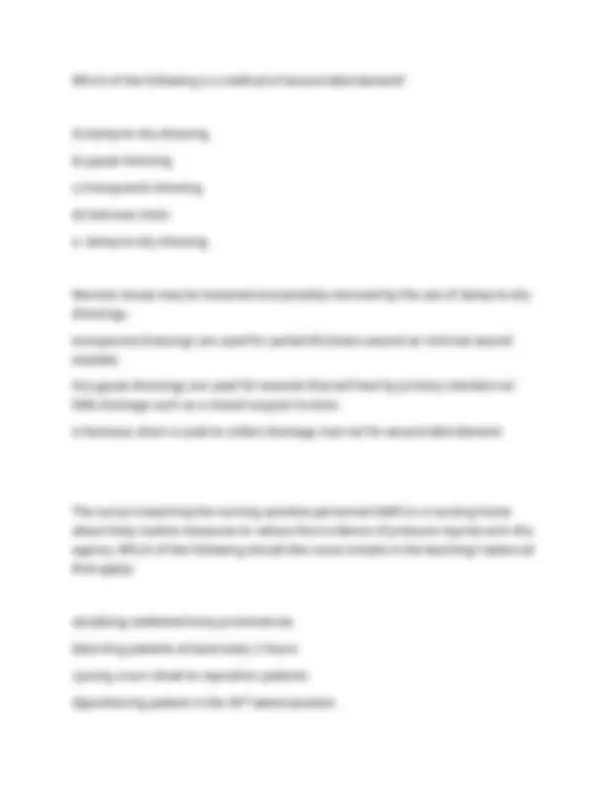
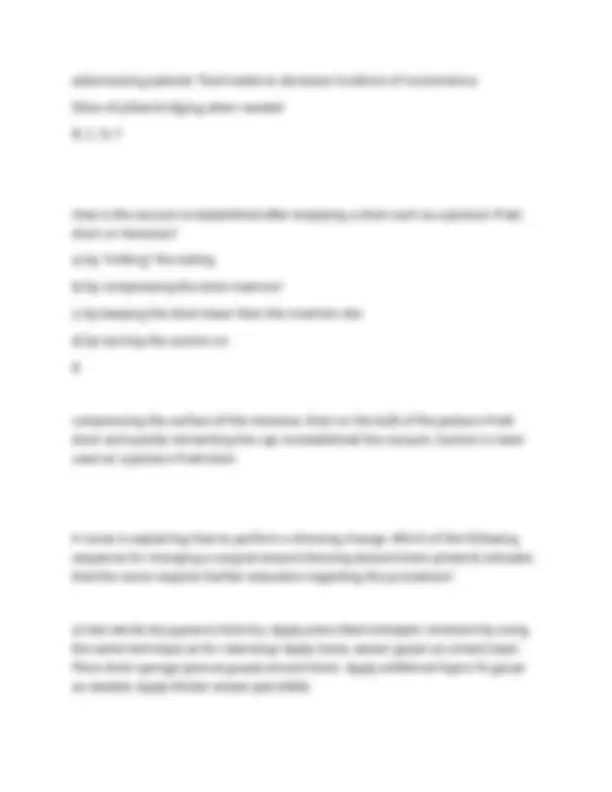
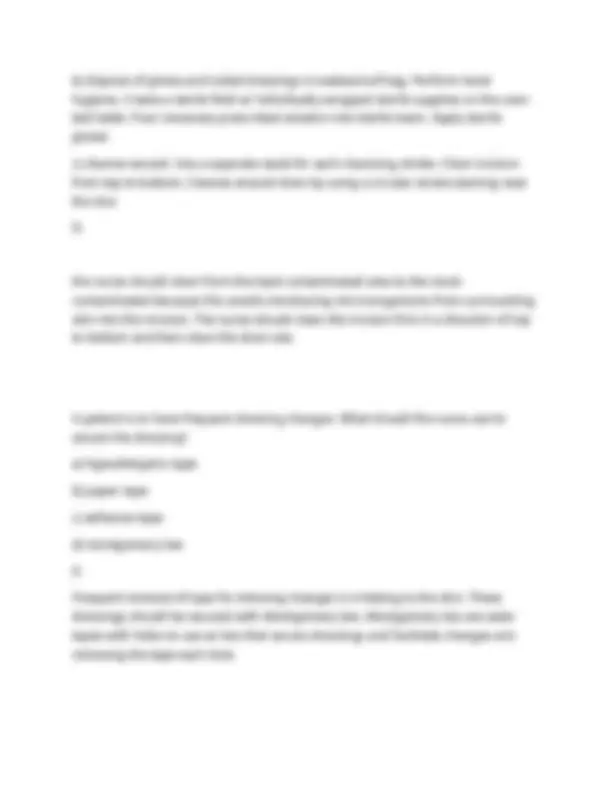
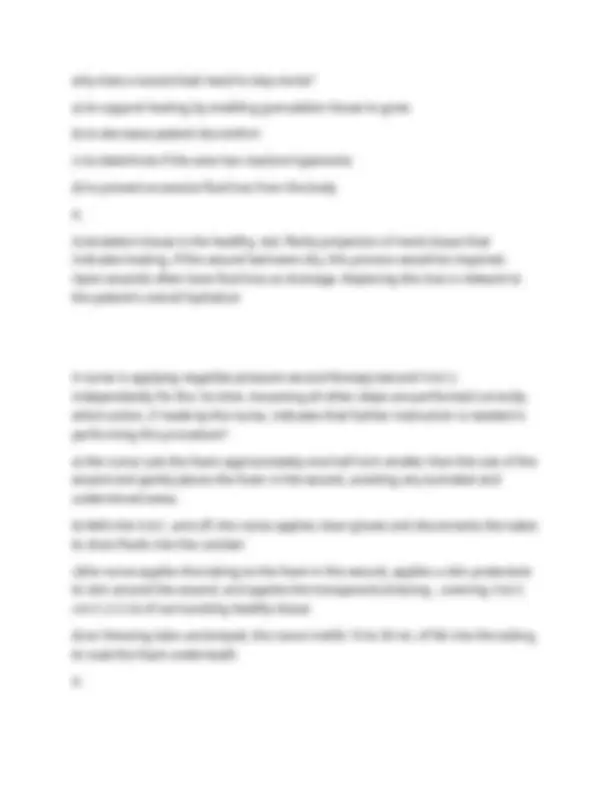
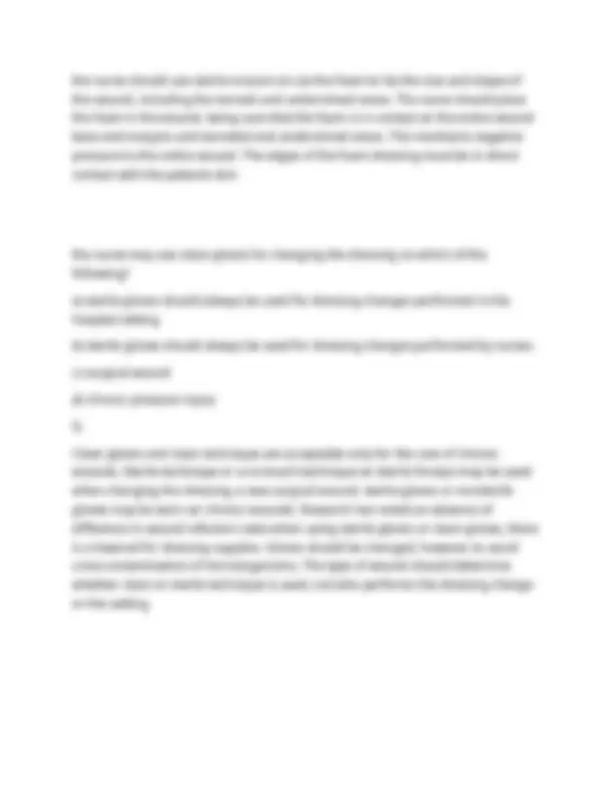
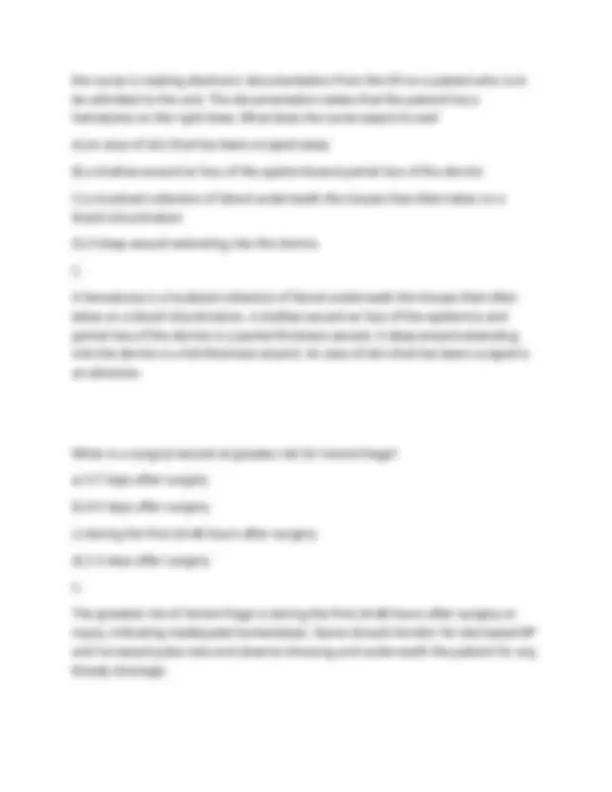
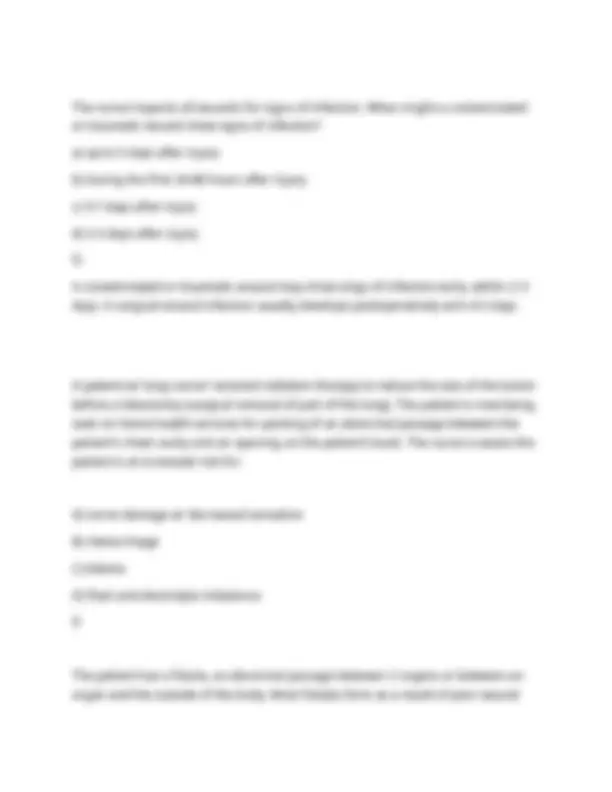
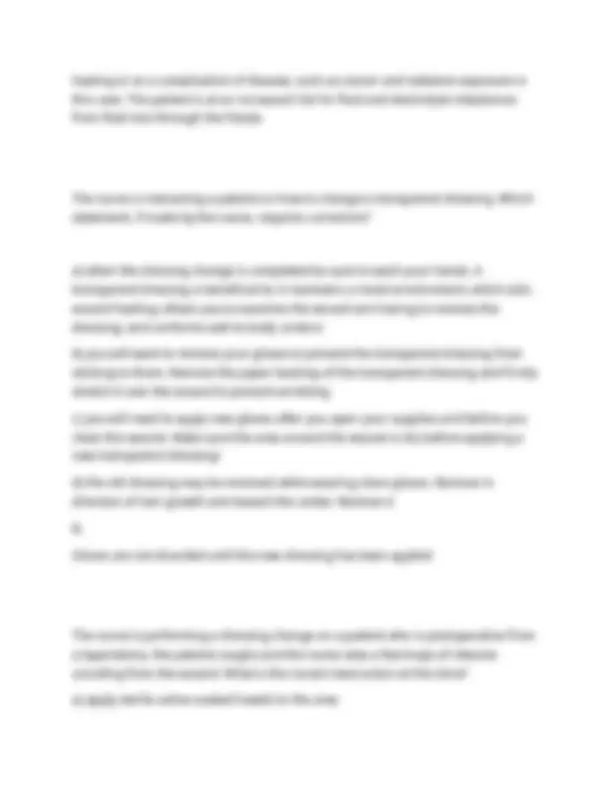
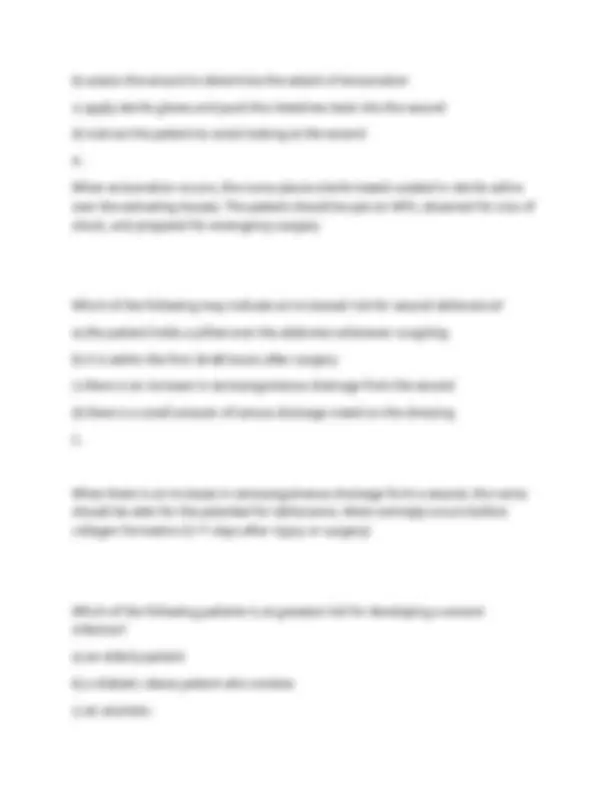
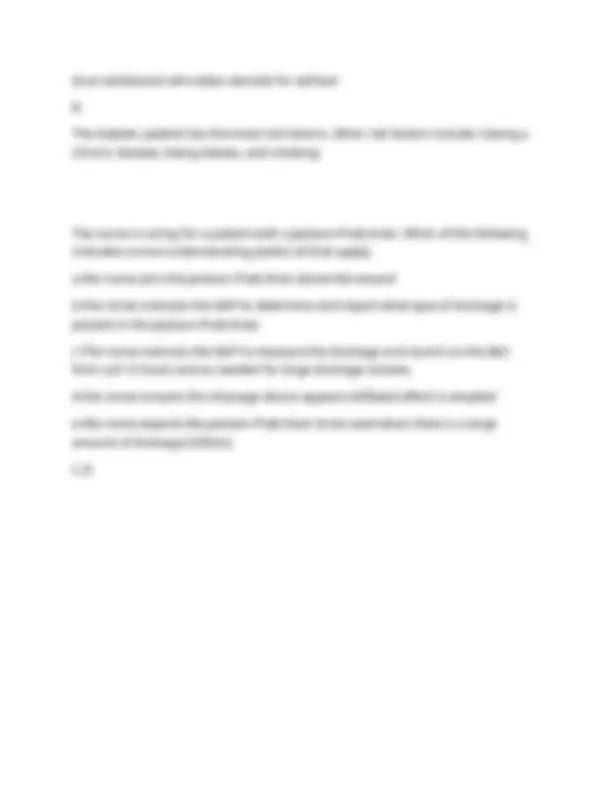


Study with the several resources on Docsity

Earn points by helping other students or get them with a premium plan


Prepare for your exams
Study with the several resources on Docsity

Earn points to download
Earn points by helping other students or get them with a premium plan
Community
Ask the community for help and clear up your study doubts
Discover the best universities in your country according to Docsity users
Free resources
Download our free guides on studying techniques, anxiety management strategies, and thesis advice from Docsity tutors
BSN 206 HALLMARK ALL CORRECT ANSWERS AND GRADED A+
Typology: Exams
1 / 43

This page cannot be seen from the preview
Don't miss anything!




































T/F: Ventilation is the exchange of oxygen for carbon dioxide at the cellular level. False Diffusion is the exchange of oxygen for carbon dioxide at the cellular level Ventilation is the process of moving respiratory gases into and out of the lungs T/F: A severely anemic patient may experience tachypnea during routine daily activities. True. Reduced hemoglobin levels result in reduced oxygen-carrying capacity that leads to decreased oxygen saturation. The body compensates by increasing the respiratory rate What are signs & symptoms of hypoxia (low cellular and tissue oxygen) restlessness (early sign of hypoxia) irritability anxiety confusion/disorientation Decreased ability to concentrate Aletered level of consciousness Syncope Altered behavior increased pulse rate (tachycardia)
increased respiratory rate (tachypnea) Elevated BP Cardiac dysrhythmias (irregular/and or premature rhythms) Pallor Complaints of dyspnea (breathlessness) Cyanosis (usually a late sign of hypoxia) What causes hypoxia? Inadequate tissue oxygen w/ adequate blood supply Develops from a deficiency in oxygen delivery or oxygen utilization at the cellular level T/F: A patient with a "normal" respiratory rate cannot become hypoxic False. An individula can have a normal ventilation rate and be unable to absorb enough oxygen to sustain normal tissue and organ function T/F: The appearance of cyanosis around the lips and fingertips of the patient may be the result of chronic respiratory impairment. True.
The best coughing technique for large volumes of sputum is the cascade cough. T/F: Coughing maintains patency of the airway by removing secretions and/or foreign body materials. True. Coughing is a protective mechanism that assists in maintaining airway patency. Assisting a patient, a paraplegic patient w/ bronchitis, by supporting his abdominal muscles during forced expiration and coughing is an example of huff coughing. False. this is an example of quad coughing. The quad cough is used w/ patients who lack control of their abdominal muscles (patients w/ spinal cord injuries and patienst w/ recent abdominal surgery) T/F: Patients at risk for airway obstruction should be encountered to breathe deeply and cough at least once every 4 hours. False. Patients at risk for airway obstruction should be encouraged to cough at least every hour.
T/F: Huff coughing is usually effective only for clearing the central airways. True. It mimic the natural cough reflex T/F: Cascade coughing requires that the patient take a deep breath and hold it for 2 seconds before performing a series of forceful coughs. True. Cascade couging is more effective at removing sputum than huff coughing T/F: Excessive airway secretions can cause airway occlusion. True The most common cause of airway obstruction in the adult is excessive secretions. T/F: A key assessment technique to determine whether a patient's airways are occluded is auscultation of the lungs. True. Auscultation determines whether secretions are present in the airways
You are reviewing the signs, symptoms, and prevention of hypoxia with the family of a patient who requires frequent suctioning at home. Choose the information that you should cover (select all that apply a. restless and anxiety are indications of hypoxia b. confusion, disorientation, and altered consciousness are indications of hypoxia c. increases in pulse, respiration, and blood pressure are indications of hypoxia d. having difficulty breathing and looking blue are indications of hypoxia e. infection and fever are indications of hypoxia f. bronchitis and chronic obstructive pulmonary disease are indication of hypoxia A, B, C, D An elderly woman is hospitalized with pneumonia and anemia and has a history of heart failure. She is weak and has a poor cough effort. Her current vital signs are temperature 100.2* F (37.9 C), pulse 114, respiration 26, BP 106/58. She has oxygen ordered at 2 liters by nasal cannula. Her oxygen saturation measures 88% when on room air, 93% with supplemental oxygen. She develops shortness of breath on any activity and eats little because it is difficult for her to eat and breathe at the same time. Which of the following are risk facotrs for this patient developing hypoxia? (Select all that apply) a. anemia b. tachycardia c. increased secretions w/ weak cough d. impaired cardiac function e. shortness of breath
f. pneumonia A, C, D, F Which of the following patients would have the greatest potential for an alteration in respiration? a. a 15-year-old boy with a migraine headache b. a 44-year-old woman with anemia c. a 19-year-old woman with diarrhea d. a 32-year-old man with an earache B Hemoglobin carries about 97% oxygen to the tissues. Anemia lowers the oxygen- carrying capacity of the blood and potentially leads to hypoxia Which of the following, if exhibited by the patient, is a late sign of hypoxia? a. restlessness b. anxiety c. eupnea d. cyanosis D
A patinet with a large amount of sputum should be encouraged to cough every hour while awake. Adequate fluids should be maintained to help keep secretions thing and easier to expectorate. Although milk has a protein structure similar to sputum, it does not increast sputum production and plays an important role in nutrition. Suctioning should be performed on an as-needed basis. T/F: When teaching patients how to perform oropharyngeal suctioning, instruct them to place the suciton setting at the highest level. False. High suctioning levels will result in injury to the mucosa. It is more important to choose a pressure level that removes the secretions without damaging the mucosa T/F: The nurse should direct NAP to avoid touching the back of the patient's throat with the Yankauer suction catheter. True Touching the back of the throat withthe Yankauer suction catheter could stimulate the patient's gag reflex A patient with a history of a cerebrovascular accidnet has left-sided weakness and difficulty with thick oral secretions and swallowing. Why would you choose a
Yankauer or tonsillar tip suction catheter to perform oropharyngeal suctioning on this patient instead of a standard suction catheter? a. it is less likely to damage oral mucous membranes b. it is less likley to cause choking c. it can also be used to suction the nares, if necessary d. it can handle large volumes of secretions D. It can handle large volumes of secretions A yankauer or tonsillar tip suction catheter is used instead of a standard sunction catheter when oral secretions are extremely copious and thick because it can handle large volumes of secretions better than a standard suciton catheter. From the following, choose the 4 primary functions of the colon (Select all that apply) Reuptake Absorption Elimination Protection Secretion Transference B, C, D, E
Assessment of a patient before giving the enema should include determining the presence of bowel sounds. Bowel sounds indicate peristalsis and an establish a baseline for determining effectiveness Which of the following patentes would it be considered acceptable to administer an enema w/o the nurse needed to question the order? A. a patient who is going to have abdominal surgery B. A paitent w/ glaucoma C. A patient w/ increased intracranial pressure D. A patient w/ inflammatory bowel disease A. a patient who is going to have abdominal surgery An enema is often administered before surgery to evacuate the bowel. Conditions that contraindicate use of enemas include the presence of increased intracranial pressure, glaucoma, inflammatory bowel disease, and recent rectal or prostate surgery A nurse is preparing to administer an enema. Which of the following actions indicates correct understanding? A.The nurse holds the tubing in the patient's rectum constantly until the end of fluid instillation B.The nurse adds 5 mL of castil soap to the enema bag and then fills it to the prescribed level with warm water C. The nurse places the male patient in the dorsal recumbent postion for enema administration
D. The nurse administers a normal saline enema w/o a health care providers' order when the patient hasn't had a BM after 3 days A. The nurse should hold the tubing since bowel contraction causes expulsion of the rectal tube. To avoid excessive foaming, the water should be added to the enema bag prior to the addition of soap. The patient should be placed in the left Sims' position. An order by a health care provider is required to administer an enema What are the correct enema insertion lengths for the following: adult adolescent child infant Adult = 7.5-10 cm (3-4 in) Adolescent = 5-7.5 cm (2-3 in) Child = 5-7.5 cm (2-3 in) Infant = 2.5-3.75 cm (1.0-1.5 in) Which of the following would be considered a normal finding after the administration and evacuation of an enema? A. abdominal distention is absent B. the patient complains of a firm and painful abdomen C. the patient passes approximately 50 mL of bright red blood
A. the patient is asking many questions B. the patient is willing to look at the stoma C. the patient holds a gauze pad over the stoma while cleaning the peristomal skin D. the patient continues to rely on the nurse to change the ostomy D. How aften should an ostomy pouch be changed? A. Every 2 weeks B. Daily C. Every 3-7 days D. Every other day C. the nurse is pouching a new ostomy. the patient asks why the nurse always measures the size of the stoma, stating, "don't you remember how large to cut the opening?" Which of the following would be an inaccurate response by the nurse and would require correction? A. Too large an opening will permit fecal drainage to come in contact w/ peristomal skin, causing irritation" B. It is important to have the correct size for a proper fit and protection of you skin C. The stoma typically increased in size w/ the passage of time" D. the stoma will shrink and reach usual size in about 6 weeks C.
The stoma will shrink and reach usual stoma size in about 6 weeks. The nurse should measure the stoma each time to ensure the correct size of appliance is used Which of the following would be inappropriate to delegate to NAP? A. Recording the amount of ostomy output B. Pouching a newly established ostomy C. Administering a tap water enema D. Administering a Fleet-type enema (commercially prepared) B. The skill of poiching an ostomy, especially a newly established ostomy, may not be delegated. The skill of administering and enema may be delegated. NAP should be directed to monitor and recorde the colume of ostomy output The NAP tells the nurse she doesnt want to care for a certian patient bc she is afraid of contracting C. Difficile. Which is the best response by the nurse? A. C. difficle is the organism responsible for duodenal ulcers B. I can reassign you to care for a different patient C. Good hand hygiene w/ soap and water is your best defense against C. difficile D. C. difficile can only be acquired through antibiotic therapy, chemotherapy, or invasive bowel procedures C
Which of the following vital signs recorded for an older adult would be considered acceptable (WNL)? A) temp 98.0F(36.7 C), P-76, R-22, BP 110/70, O2 sat 88% B) temp 97.0F (36.1C), P-60 R-16, BP 116/78, O2 sat 95% C) temp 98.6F (37 C), P-56, R-20, BP 120/80, O2 sat 91% D) temp 96.8F (36C), P-60, R-18, BP 160/90, O2 sat 93% B. Normal values for an older adult are: average temp 36 C (96.8 F) HR 60-100 BPM RR 16-25 breaths per minute Average BP less than 120/ O2 Sat 95%-100% BP > 140/90 = hypertension The nurse has delegated the task of temperature assesssment to the NAP. When info should be provided to the NAP? (select all that apply) a) pt's DX
b) what changes to report immediately to the nurse c) pt's age d) type of temp required e) frequency for taking / monitoring the temp b,d,e more important that the temp be dnoe on time by the correct route w/ the correct equipment, and that identified changes be reported as requested Which of the following situations may affect a pateint's vital signs? (select all that apply) a) pain rated as a 7 on 0-10 pain scale b) isolation precautions c) time of day d) moving from a lying to standing position e) occupation a, c, d factors that may alter vital signs include: time of day, stress, temp alterations (weather conditions), postural changes, acute pain, smokings, disease/injury status, noise, food/liquid consumption, odors